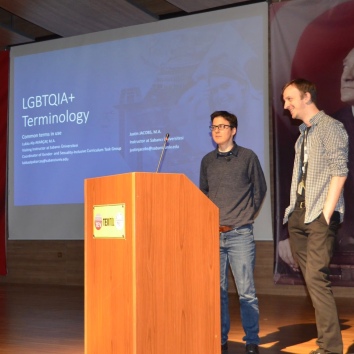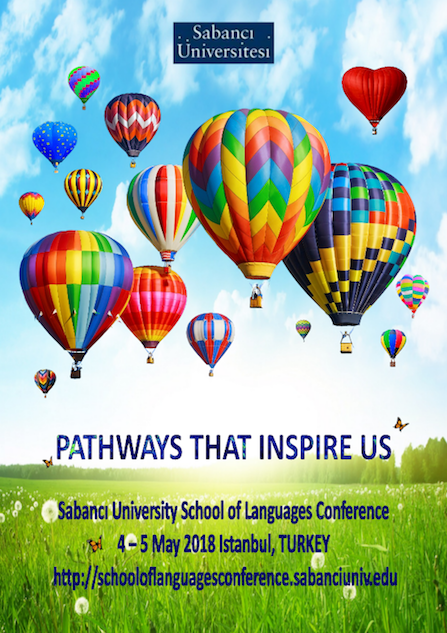Twenty-five years ago Deborah Britzman (1995) asked “what does education need to learn from the pandemic known as AIDS and from the political demands of those who live at or beyond the sexual limits?” Although much has changed in the politics of cultural knowledge and social fiction surrounding the AIDS pandemic, and some progress has been made on the political demands of those who live at or beyond the sexual limits in some parts of the globe; could there be a similar political and cultural crisis today in the current conditions and the local narratives associated with the COVID-19 pandemic and with the lives of those who live at or beyond the sexual limits? The current COVID-19 crisis is an opportunity to pursue better politics, economies, societies and pedagogies – in which sustainable, equitable and democratic solutions are central – and to critically confront unsustainable reproductions of socially and politically subjugated life and work norms that define our humanity. This crisis will continue to trouble and drive us to look more deeply into our hierarchical systems, institutions and relationships that sustain economic and social inequalities governed by heteropatriarchal regimes and nurtured by normative and heterocentric limiting practices in education.
As we replaced physical classrooms with virtual ones overnight, the COVID-19 pandemic has certainly forced many educators to reflect on the dynamics of teaching and rethink the limits of learning and knowledge (Britzman, 1995). Virtual modes of communication seemed to hold remote and polymorphous characteristics that came with techno-interactive pedagogical possibilities. It also required teachers to quickly adapt to these technologies and online classrooms while simultaneously struggling to navigate a variety of methodological challenges. This hybridized contorted landscape restructured the very ecosystem and nature of teaching. What changes in a virtual classroom? How do we negotiate and navigate our identities and/or “non-normative educational desires” (Fraser & Lamble, 2015)? How do we fully engage with one another, embrace critical and creative thinking to create language and discourses that challenge and critique hierarchical social relations and issues? During online sessions and discussions, some students navigated effortlessly, some expressed a preference for face-to-face classroom sessions, and others seemed to have lost motivation and made irregular appearances. Holding class discussions in which, much of the time, students had no faces (as many participated without turning their cameras on) was a distinct challenge. I wonder how we will navigate the limits of thinking, learning and knowledge if we remain, partially or not, in virtual learning communities. Many of us now wonder how education will continue to be impacted, and how these hybridized experiences will inform educational institutions: what will our classrooms look like going forward? How will we socially position ourselves and map our classroom communities in a post COVID-19 life?
To reimagine our teaching practices means to reflect on curriculum, theories, methods and praxis; to reconsider a curriculum design that solely focuses on academic language skills and the testing of those skills using course books/materials that configure language as an entity devoid from the social realities, experiences and identities of students and our societies; to critically interrogate texts/images incorporated into language practice activities that perpetuate hegemonic and heteronormative discourses and representations of people; to reflect on what is at stake when we come across gender stereotypes in the pages of our course books – or sometimes, from the people in the classroom – that reinforce gender based differences without studying “the risks of normalization” (Luhmann, 2009). It also means being self-reflexive of our own responses to and alliance with hegemonic discourses.
Educators can utilize Queer Theory to address the challenges of normalization. Queer Theory allows educators to actively participate in raising awareness for a critical consciousness around such hegemonic discourses that define normalcy (Zacko-Smith & Smith, 2010) and question the ways in which identities are historically and culturally constituted and positioned (Watson, 2005). Looking at some of the positive outcomes of applying Queer Theory as a lens through which to look at systems and institutions, Halperin (2003) mentions that Queer Theory allows for reexamination of the relationship between gender and sexuality – not only as analytic categories, but also as lived experiences. Luhmann (2009) states that utilizing queer pedagogy involves not only examining normalization, but also, examining teaching and learning, whether subversive or not, and the limits of its very own pedagogical practices. Queer pedagogy allows for the interrogation of hegemonic discourses, ideologies and heteronormative constructions of sexuality by deconstructing (Curran, 2006) and reimagining social norms and values that “keep people from gender and sexual self-determination” (Miller, 2015).
The political and cultural crisis today in the current conditions and the local narratives associated with the COVID-19 pandemic and with the lives of those who live at or beyond the sexual limits is similar to the cultural knowledge and social fiction that had surrounded the AIDS pandemic.
As we reimagine learning, teaching and higher education post COVID-19, we are more dependent on the radical solidarity between students, educators and administrators to radically queer[1] the curriculum and address the challenges of normalization as a way to disrupt heterocentric discourses, “open up spaces for non-normative educational desires to emerge” (Fraser & Lamble, 2015) and to collectively engage in building a more just world.
[1] Queer is used as a verb. Please see Fraser & Lamble’s (2015) Queer Desires and Critical Pedagogies in Higher Education: Reflections on the Transformative Potential of Non-Normative Learning Desires in the Classroom for an exploration of a queer approach in higher education.

In the Shadows of Existence/Reconstruction, pencil drawing on paper, 24 x 33 cm, 2018 by L. Alp Akarçay
*This article was published in the 5th issue of TESOL in TURKEY Professional ELT Magazine Online. Webpage link: tesolturkey.net
Acknowledgement
Thank you to Jessmaya Morales for taking the time to read this and offer suggestions for editing from across the ocean, time zones apart and while in the midst of projects.
References
Britzman, D., (1995). Is there a Queer Pedagogy? Or, Stop Reading Straight. Educational Theory 45(2), 151-165.
Curran, G., (2006). Responding to Students’ Normative Questions about Gays: Putting Queer Theory into Practice in an Autralian ESL Class. The Forum, Journal of Language, Identity & Education, 5(1), 85-96.
Fraser, J., & Lamble, S., (2015). Queer Desires and Critical Pedagogies in Higher Education: Reflections on the Transformative Potential of Non-Normative Learning Desires in the Classroom. Journal of Feminist Scholarship 7(8), 61-77.
Halperin, D. M., (2003). The Normalization of Queer Theory. Journal of Homosexuality 45(2-4), 339-343.
Luhmann, S., (2009). Queering/Querying? Or Pedagogy is a Pretty Queer Thing. In Pinar, W. F. (Ed.), Queer Theory in Education. (pp.120-133). Taylor & Francis e-Library.
Miller, S. J., (2015). A Queer Literacy Framework Promoting A(Gender) and A(Sexuality) Self-Determination and Justice. English Journal 104(5), 37-44.
Watson, K., (2005). Queer Theory. Group-Analytic Society (London) 38(1), 67-81.
Zacko-Smith, J. D., & Smith, G. P., (2010). Recognizing and Utilizing Queer Pedagogy. Multicultural Education, 2-9.




